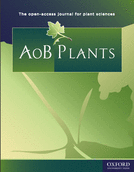View Item
- xmlui.general.dspace_homeCentros Regionales y EEAsCentro Regional Mendoza - San JuanEEA MendozaArtículos científicosxmlui.ArtifactBrowser.ItemViewer.trail
- DSpace Home
- Centros Regionales y EEAs
- Centro Regional Mendoza - San Juan
- EEA Mendoza
- Artículos científicos
- View Item
An empirical model that uses light attenuation and plant nitrogen status to predict within-canopy N distribution and upscale photosynthesis from leaf to whole canopy
Abstract
Modelling the spatial and temporal distribution of leaf nitrogen (N) is central to specify photosynthetic
parameters and simulate canopy photosynthesis. Leaf photosynthetic parameters depend on both local light availability
and whole-plant N status. The interaction between these two levels of integration has generally been modelled
by assuming optimal canopy functioning, which is not supported by experiments. During this study, we examined how
a set
[ver mas...]
Modelling the spatial and temporal distribution of leaf nitrogen (N) is central to specify photosynthetic
parameters and simulate canopy photosynthesis. Leaf photosynthetic parameters depend on both local light availability
and whole-plant N status. The interaction between these two levels of integration has generally been modelled
by assuming optimal canopy functioning, which is not supported by experiments. During this study, we examined how
a set of empirical relationships with measurable parameters could be used instead to predict photosynthesis at the
leaf and whole-canopy levels. The distribution of leaf N per unit area (Na) within the canopy was related to leaf light
irradiance and to the nitrogen nutrition index (NNI), a whole-plant variable accounting for plant N status. Na was then
used to determine the photosynthetic parameters of a leaf gas exchange model. The model was assessed on alfalfa
canopies under contrasting N nutrition and with N2-fixing and non-fixing plants. Three experiments were carried out to
parameterize the relationships between Na, leaf irradiance, NNI and photosynthetic parameters. An additional independent
data set was used for model evaluation. The N distribution model showed that it was able to predict leaf N on
the set of leaves tested. The Na at the top of the canopy appeared to be related linearly to the NNI, whereas the coef-
ficient accounting for N allocation remained constant. Photosynthetic parameters were related linearly to Na irrespective
of N nutrition and the N acquisition mode. Daily patterns of gas exchange were simulated accurately at the leaf
scale. When integrated at the whole-canopy scale, the model predicted that raising N availability above an NNI of 1 did
not result in increased net photosynthesis. Overall, the model proposed offered a solution for a dynamic coupling of
leaf photosynthesis and canopy N distribution without requiring any optimal functioning hypothesis.
[Cerrar]

Author
Louarn, Gaëtan;
Frak, Ela;
Zaka, Serge;
Prieto, Jorge Alejandro;
Lebon, Eric;
Fuente
AoB plants 7 : 1-16. (2015)
Date
2015-10-03
ISSN
2041-2851
Formato
pdf
Tipo de documento
artículo
Palabras Claves
Derechos de acceso
Abierto
 Excepto donde se diga explicitamente, este item se publica bajo la siguiente descripción: Creative Commons Attribution-NonCommercial-ShareAlike 2.5 Unported (CC BY-NC-SA 2.5)
Excepto donde se diga explicitamente, este item se publica bajo la siguiente descripción: Creative Commons Attribution-NonCommercial-ShareAlike 2.5 Unported (CC BY-NC-SA 2.5)


